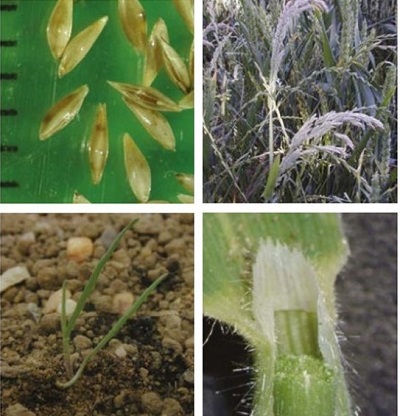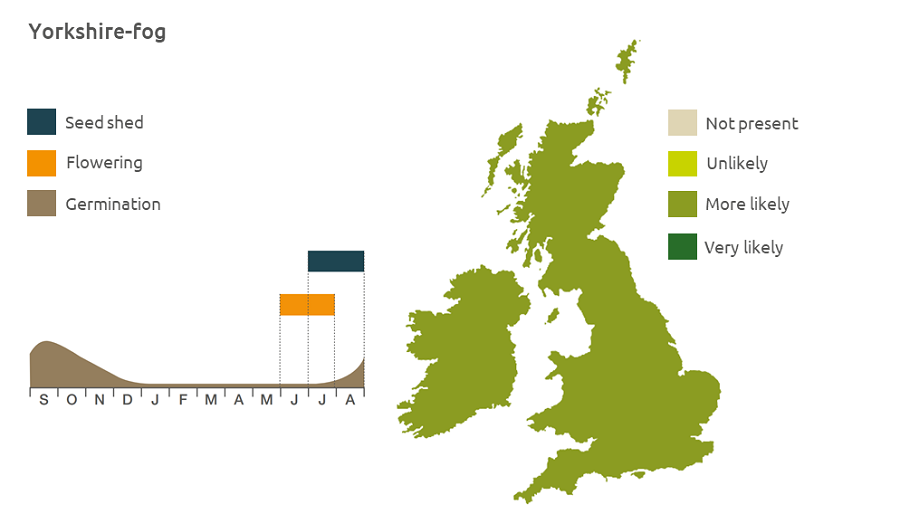- Home
- Knowledge library
- Distribution and biology of Yorkshire-fog weeds in the UK
Distribution and biology of Yorkshire-fog weeds in the UK
Yorkshire-fog is found throughout the UK, usually in or near field margins. Find out how to identify and control this grass weed.
Overview
Yorkshire-fog (Holcus lanatus) is usually found only in or near field margins. Established plants do not grow over winter although the leaves may stay green. New shoots are formed in the spring, but the leaves are short-lived. Reproduction is usually by seed, which can germinate rapidly in a range of temperatures. Yorkshire-fog is a prolific seeder, with individual plants capable of producing up to a quarter of a million seeds each season. As the seed is small and fine it can travel long distances carried by wind. However, seedling vigour is poor and young plants often fail to establish in dense pasture.
- It has value to biodiversity
Description
It is a tufted, very hairy, perennial grass, 20–100 cm tall, with loose or compactly tufted stems. The plants look velvety with grey-green leaf blades. The flowerheads start tightly packed like artists’ brushes, but develop into a conical open shape.
Key features
Young plant: There are red/pink strips at the base of the shoots.

Location and life cycle

Geographic distribution
Yorkshire-fog occurs as seedling in every type of habitat, with the greatest abundance in meadow and pasture. It can grow at altitudes of up to 600 m. It prefers damp sites, shady areas and low ground. In ditches it can become dominant to the extent of excluding other species.
Soil type
It grows in a wide range of weakly acidic soils, preferring moist conditions and high fertility, in the pH range 5–7.
Seed statistics
- Seed longevity: 1–5 years
- Seed weight: 0.25 mg
- Seeds/head: 1–10
Management
It is seldom a persistent problem within crops and is reduced by spring cropping and ploughing regimes, but is encouraged by grass breaks.
For advice on herbicides, please speak with your agronomist or adviser.
When was this information last updated?
This page is based on content from the encyclopaedia of arable weeds publication. Since it was first released in 2008, the publication has been redesigned several times but not revised. However, it remains a good foundation for general information on the distribution and biology of weeds.

